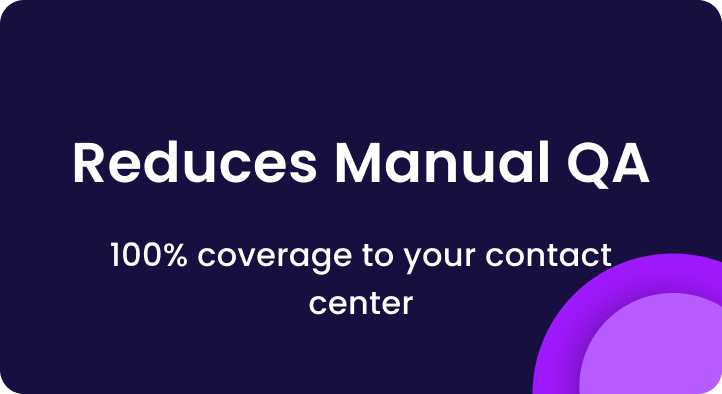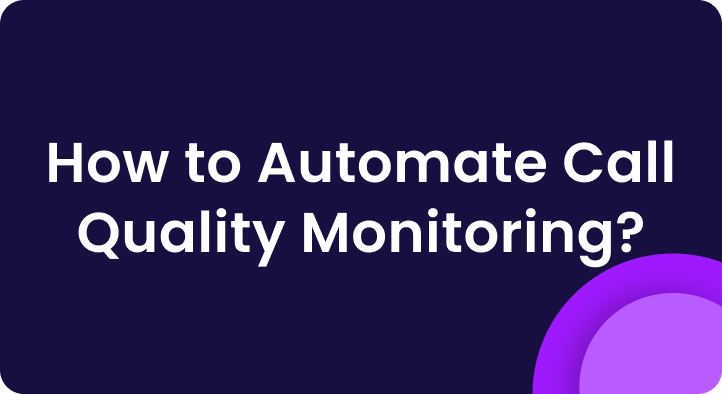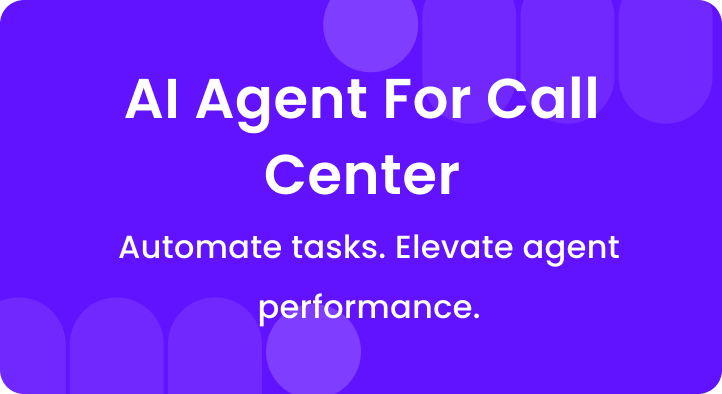This call is being recorded for quality assurance.
You hear that line all the time. It was initially there only for legal reasons.
Companies needed proof of what was said. Today, that short sentence means much more.
Every saved call is a goldmine of authentic customer voices.
Managers replay them to see what works and what fails.
Innovative software now reviews more calls in minutes than humans ever could.
Those findings help you coach agents, refine scripts, and identify trends quickly.
The result? Shorter calls, happier customers, and stronger teams.
In this article, you’ll learn how simple recordings moved from boring compliance to powerful coaching and why that shift matters for every contact center.
From compliance to coaching, welcome to the new era of recorded service.
Upload Call & Get Insights
 DOWNLOAD DUMMY FILE
DOWNLOAD DUMMY FILE A. What does “this call is being recorded” really mean today?
Not long ago, “This call is being recorded for quality assurance” was mostly legalese.
Companies said it to avoid liability and meet regulations.
But today, it signals a commitment to quality and improvement.
When you hear that message now, it often means the business is serious about monitoring the call for service quality and training purposes.
History of the Phrase
- Analog tape reels (1980s–90s) – limited storage, used only for legal evidence
- Early digital (2000s) – easier archiving, still compliance-first
- Cloud & analytics age (2010s–present) – searchable, shareable, fuel for customer-experience (CX) insights
Shift From Legal Disclaimer to Performance Optimization
- Defensive past: Record just in case we get sued.
- Offensive present: Record because each call holds clues to boost First-Call Resolution (FCR), Average Handle Time (AHT), and Customer Satisfaction (CSAT).
- Tech catalyst: Affordable storage, real-time speech analytics, and AI-driven call center automation enable you to review 100% of interactions, not just a lucky 2%.
Why It Matters More Than Ever in Today’s CX Landscape
- Viral risk: A single mishandled call can go viral on social media within hours.
- Experience wars: 65% of U.S. consumers say a single poor experience drives them to a competitor.
- Data hunger: Recorded calls = raw voice-of-customer gold. Product, marketing, and ops teams mine those insights daily.
Big idea: The phrase now shouts, “We care about getting this right and we’ll use every second of audio to prove it.”
B. Why companies record calls: beyond compliance and liability
| # | Strategic Reason | Fast Benefit in the Real World |
| 1 | Training & Onboarding | New hires binge top calls; ramp-up time drops. |
| 2 | Quality Assurance (QA) & Coaching | Concrete clips provide more effective feedback, enabling agents to improve more quickly. |
| 3 | Trend & Sentiment Tracking | Bulk analysis spots policy gaps or product bugs days sooner. |
| 4 | Regulatory Compliance | Every disclosure verified; fines and lawsuits avoided. |
| 5 | CX Enhancement | Voice-of-customer insights drive better scripts and smoother journeys. |
| 6 | Dispute Resolution | Clear audio proof settles “he-said/she-said” in minutes. |
Companies still record calls to cover the compliance basics, but they also unlock many strategic benefits beyond legal protection.
Here are six big reasons you might hear “this call is being recorded for quality assurance purposes”:
1. Training and onboarding
Recorded calls provide real-life examples for training new hires and ongoing coaching.
They help show what excellent service sounds like (and what not to do) in a way no manual or role-play can.
New agents can learn from the best and understand expected performance levels by listening to actual customer interactions.
2. Quality assurance and coaching
By reviewing calls, QA teams can evaluate agent performance and find areas for improvement.
Instead of relying on hunches, supervisors hear exactly how agents handle inquiries.
This makes feedback more concrete, allowing you to pinpoint weak spots and provide targeted coaching.
Over time, these call reviews ensure the whole team is performing at its best.
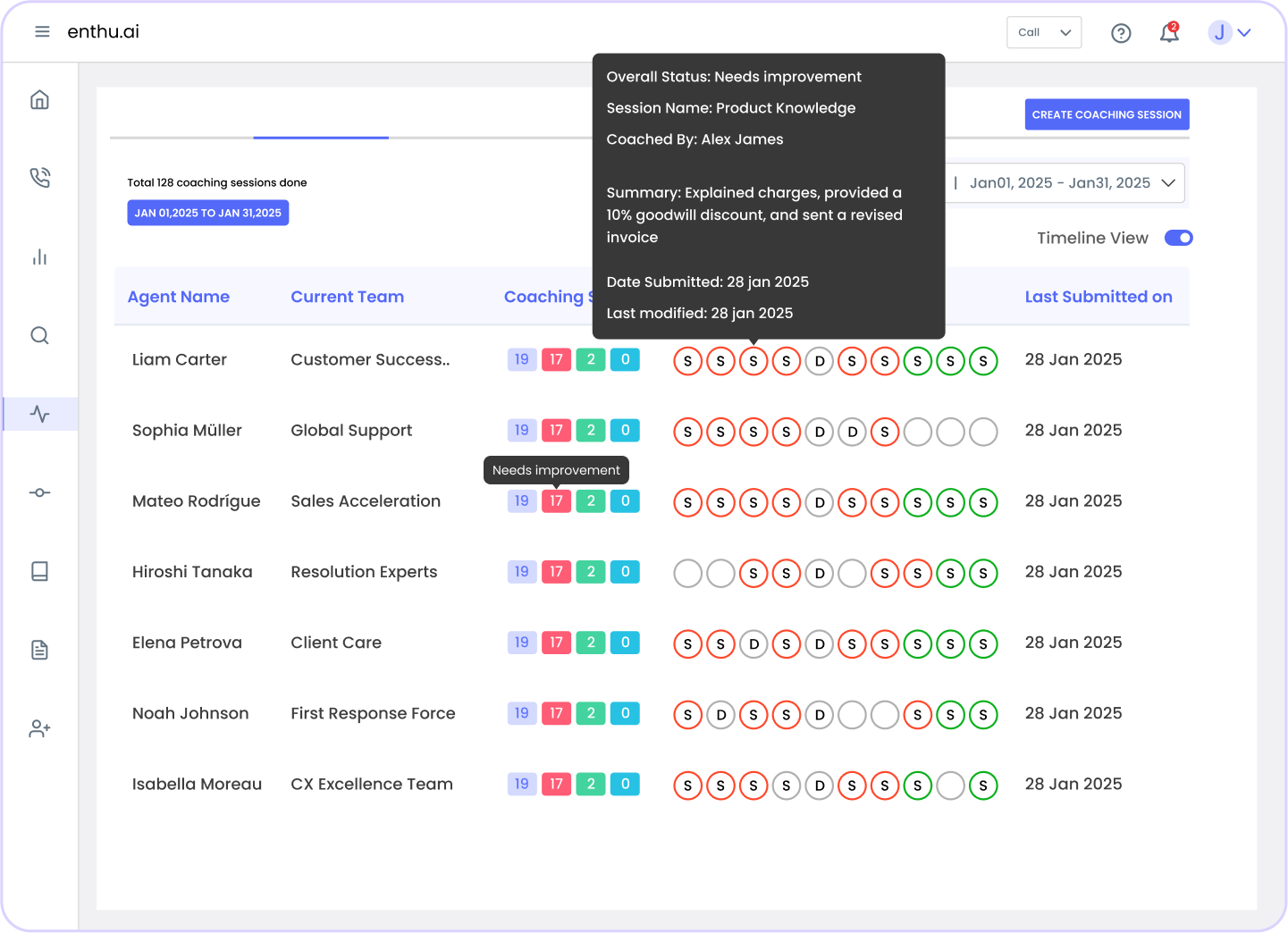
3. Identifying trends and customer pain points
Call recordings enable you to identify common problems and trends across multiple conversations.
For example, if dozens of customers call about the same product issue or policy confusion, you can quickly detect that pattern.
This insight helps drive improvements – fix the product issue, update the FAQ, or adjust your scripts.
4. Ensuring compliance and consistency
In regulated industries (finance, healthcare, etc.), recording calls is critical for compliance.
It helps confirm agents are following company policies and legal guidelines on every call.
If an agent slips up (say, forgets a required disclosure), you’ll catch it and correct it.
Beyond laws, recordings ensure consistent service quality.
It ensures that every customer receives accurate information and a respectful tone, regardless of which agent they speak with.
5. Enhancing customer experience
Listening to calls is one of the best ways to understand your customers.
Recordings capture the voice of the customer – their frustrations, preferences, and moments of joy.
Companies analyze this to enhance the customer experience.
For instance, if customers repeatedly request a feature, product teams take note of it.
If a specific phrase an agent uses delights callers, it can be adopted as a best practice.
Using calls this way helps tailor services to what customers really want, boosting satisfaction.
6. Dispute resolution and accountability
When a he-said/she-said situation arises, call recordings are a lifesaver.
They serve as an impartial record to quickly resolve customer disputes or clarify misunderstandings.
This not only protects the company from false claims but also builds trust.
Customers know you can transparently check what was promised or discussed.
Agents, too, are more accountable, knowing their interactions are reviewable, which generally encourages professionalism and honesty on every call.
Pro tip: Solutions like Enthu.AI help automate call monitoring at scale, allowing you to capture all these benefits without being overwhelmed by workload. Enthu’s platform, for example, can automatically transcribe and evaluate calls, making it easy to spot trends or coaching moments across 100% of your interactions. By leveraging such tools, contact centers turn a mountain of call data into bite-sized insights for agent coaching and customer experience improvement.
C. How call recordings drive real business value
Recording and analyzing calls isn’t just a nice-to-have; it drives real business results.
Here’s how call recording drives real business value:
1. From playback to payoff
When implemented correctly, a call review program can directly enhance key metrics such as FCR, AHT, and CSAT.
The reason is simple: listening to calls sheds light on what’s working and what isn’t, allowing you to fix issues and replicate successes more quickly.
First-Call Resolution (FCR)
- Problem: Repeat callers spike costs.
- Recording insight: Hold-time snippets reveal missing knowledge-based articles.
- Result: Update docs, FCR jumps from 72% to 83%.
Average Handle Time (AHT)
- Problem: Agents experience long holds while searching for information.
- Recording insight: Transcripts show where agents fumble.
- Result: Targeted micro-training trims AHT 20% (5 min to 4 min).
Customer Satisfaction (CSAT)
- Problem: New agents sound scripted and stiff.
- Recording insight: Identify empathy gaps; run call center active listening techniques training.
- Result: CSAT climbs from 78 to 90 out of 100.
2. Training, Accountability, Consistency = Better Outcomes
- Training: Real calls beat role-play; people learn by example.
- Accountability: Agents are aware that every call can be replayed. Performance improves naturally.
- Consistency: Scorecards align everyone on what “great” sounds like.
Bottom line: Call recordings drive improvement in training, consistency, and performance. They create a continuous feedback loop. You identify an issue, coach the agent, see better outcomes, and ultimately deliver a smoother experience to the customer.
D. The rise of AI-Powered call QA
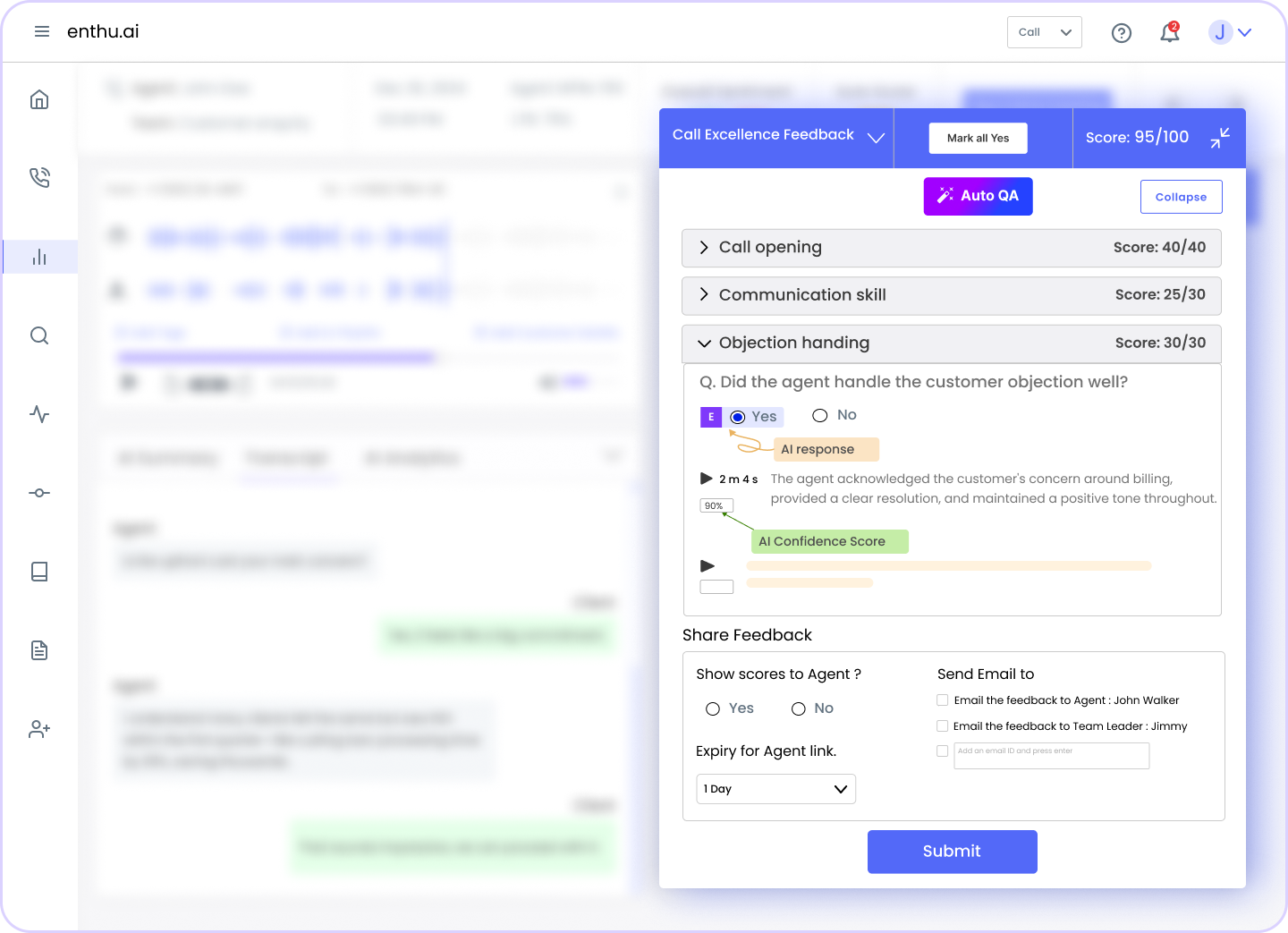
In the past, supervisors or QA analysts would randomly sample a small percentage of calls, typically 1-3%, and manually score them.
If your contact center received thousands of calls, this meant the vast majority were never reviewed at all.
Important insights slipped through the cracks simply because of the volume.
Traditional QA was also time-consuming (listening to a single call in full and then filling out a scorecard might take 30 minutes or more) and often inconsistent or biased, as each evaluator might hear things differently.
Enter AI-powered QA, and the game changed.
Modern AI call center automation can analyze nearly 100% of calls, not just a tiny sample.
The table below illustrates the stark difference in QA call coverage between the old approach and the new approach:
| Metric | Manual QA | AI-Driven QA |
| Calls Scored | 2% | 100% |
| Turnaround | Days/weeks | Minutes |
| Consistency | Subjective | Rule-based & fair |
| Cost per Call | High | Pennies |
AI doesn’t replace human coaches, but it gives them superpowers by crunching the data and highlighting what to focus on.
Enthu.AI is one example of this AI revolution in QA.
How Enthu’s Auto QA & speech analytics scale effortlessly
- Real-time transcription.
- Auto-scoring against your custom scorecard (compliance checks, empathy cues, script adherence).
- Sentiment tracking pinpoints angry moments fast.
- Coaching playlists compile best-practice clips for daily huddles.
Try it now. Upload five calls – we provide five free evaluations and a comprehensive QA report.
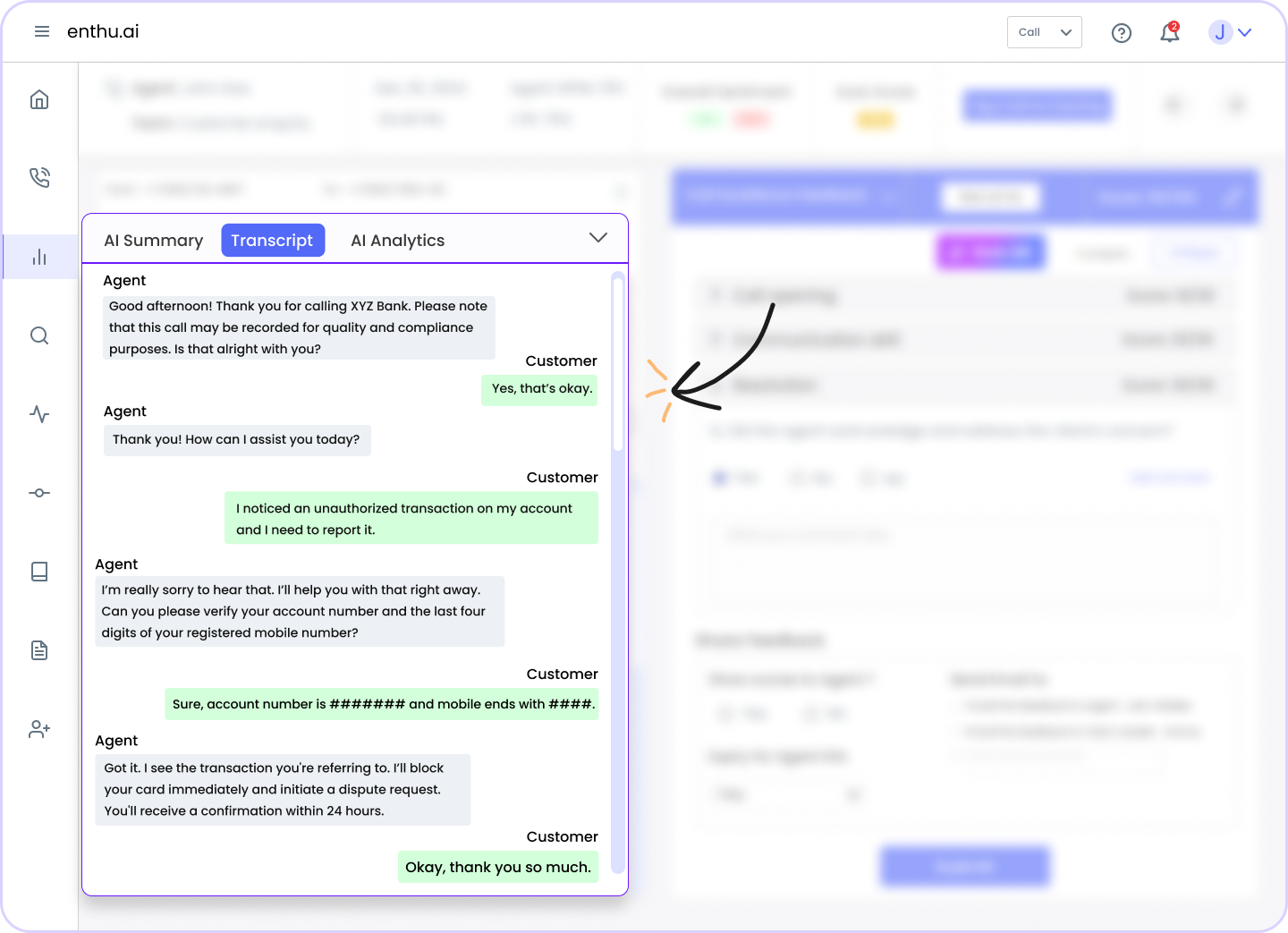
E. Customer perspective: Is it legal and ethical to record calls?
Is it even legal for them to record me?
In the United States, the answer is yes, it’s legal as long as you follow consent laws.
Federal law allows one-party consent, so a company can legally record if at least one participant (the agent) agrees.
Roughly a dozen states, including California, Florida, Pennsylvania, and Massachusetts, require two-party consent, meaning every caller must be told and must agree.
Because laws differ, the safest and most transparent move is to disclose recording at the very start of every call.
Doing so builds trust, signals professionalism, and reassures customers that their conversation is protected.
1. U.S. call recording laws (One-Party vs. Two-Party Consent)
| Consent Rule | Coverage | What It Means in Practice |
| One-Party | Most U.S. states | Agents can consent; it’s still smart to notify customers. |
| Two-Party | CA, FL, PA, MA + others | Must inform and receive agreement from everyone before recording. |
2. Ethical Best Practices
- State the recording notice up-front in plain language.
- Explain the purpose (“for training and quality”) to frame it positively.
- Secure files: encrypt, limit access, and set clear retention periods.
- Update your privacy policy to specify how long recordings are stored and the reasons for this storage.
- Always honor opt-outs or offer an alternate, non-recorded channel when feasible.
F. How to inform customers the right way
Knowing you should inform customers is one thing; doing it the right way is another.
The goal is to be clear and upfront about recording without disrupting the conversation or causing alarm.
Here are four best practices for telling customers “this call is being recorded” in a customer-friendly manner:
1. Be clear and brief from the start
Use simple, non-technical language and mention the recording immediately at the beginning of the call.
The message should be short and easy to understand.
For example, “Hi, this is Amanda with ABC Corp. Just a heads-up: this call may be recorded for quality purposes.”
That’s it – one sentence.
Avoid using wordy legal jargon, such as “under applicable law,” or overly technical terms.
If you inform the caller right away, you’re respecting their right to know.
2. Set the right tone (Friendly and Professional)
How you say it matters.
Whether it’s an automated IVR message or spoken by an agent, the recording notice should be conveyed in a polite, warm tone.
Avoid sounding robotic or apologetic.
You can even smile while saying it – a bit of friendliness can come through in your voice.
The phrase is part of your script, so deliver it confidently and naturally, just as you would the rest of your greeting.
Customers take cues from your tone; if you sound comfortable, they’ll feel it’s a regular part of the process (which it is).
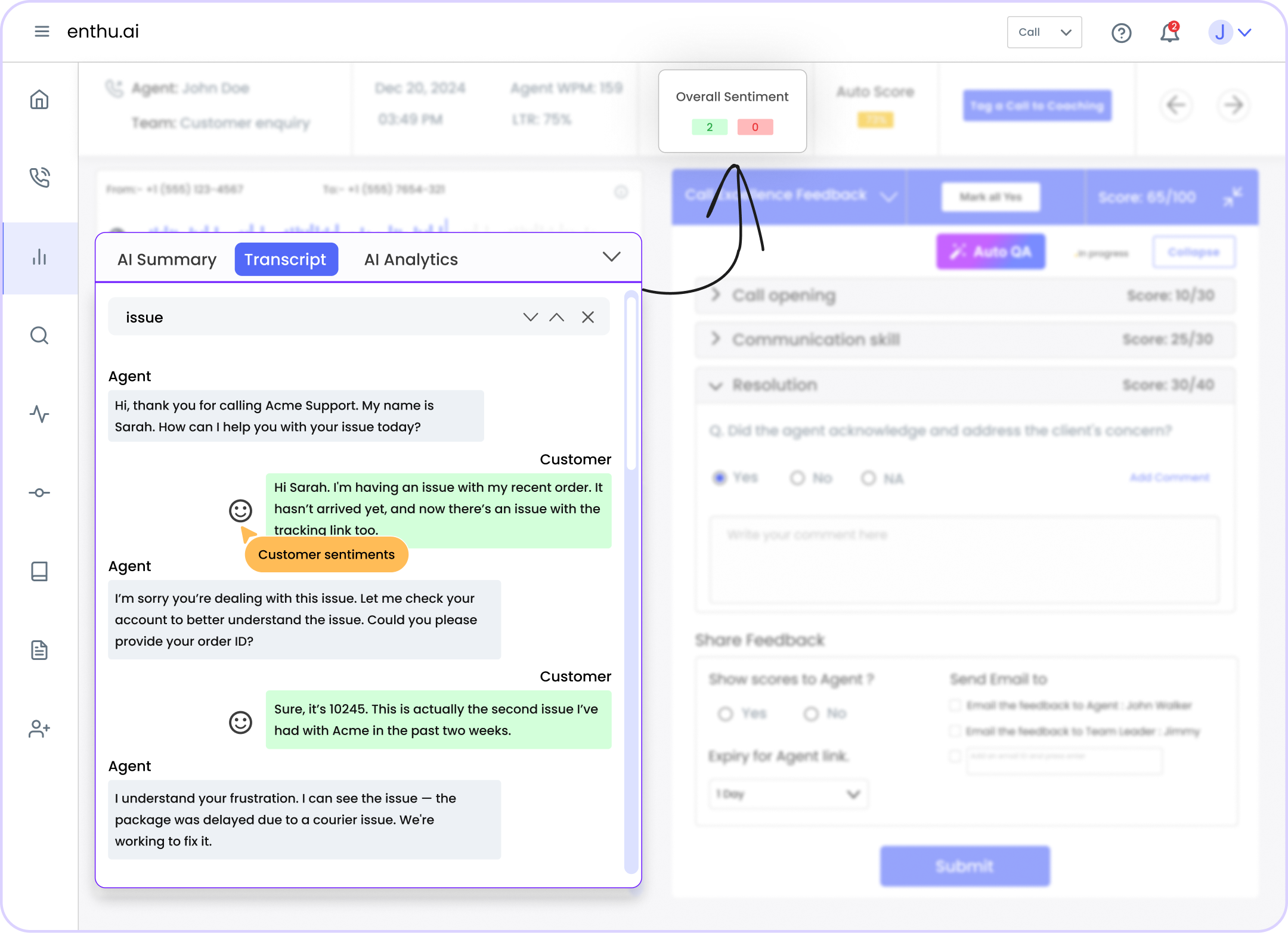
3. Explain the purpose (and benefits) if needed
Most customers won’t object to the recording notice, especially if it’s concise.
But if anyone seems hesitant or asks, be ready to explain why you record briefly.
For instance: “We do this to help train our team and improve our service. It helps us help you better.”
Giving a reason frames the recording as a positive thing. It’s there to ensure a great customer experience.
This transparency about purpose can reassure customers that the recording isn’t for any nefarious reason, but rather to benefit them.
4. Offer an alternative if necessary
In rare cases, a customer might say they’re not comfortable being recorded.
Train your team on how to handle that.
Options include offering a non-recorded channel, such as switching to a different line that isn’t recorded, or suggesting an email or chat interaction if that’s viable.
Always be honest about the options.
For instance: “I understand, however, our system records calls by default. If you prefer, I can assist you via our online chat for this request.”
This way, the customer feels heard and has a degree of control.
Where to deliver the message?
- IVR greeting (best) – consistent, automatic, zero agent slip-ups
- Live greeting – if no IVR, agent leads with it
- Website/email – reinforce transparency before the call even starts
Mistakes to avoid
- Don’t drown the notice in a bunch of legal jargon that confuses people.
- Don’t delay mentioning it until deep into the call; that can feel sneaky (“Why are you telling me only now? Have you been recording me all along!?”).
- Don’t let agents mumble it unintelligibly or rush through it; that can negate the whole point of informing.
- Don’t use a harsh or monotonous tone that might make the customer feel like they’re talking to Big Brother.
Conclusion
The phrase “This call is being recorded for quality assurance” has evolved from a legal formality to the cornerstone of standout service.
Each saved conversation now fuels sharper coaching, stronger scripts, and data-driven decisions.
When AI reviews 100% of calls, you uncover patterns, fix gaps, and scale best practices overnight.
For CX leaders, recordings are gold: use them to boost CSAT, reduce handle time, and motivate agents with clear, fair feedback.
Embrace full-coverage QA tools like Enthu.AI, act on the insights, and that familiar phrase will signal your brand’s promise: we listen, we learn, and we never stop improving.


 On this page
On this page